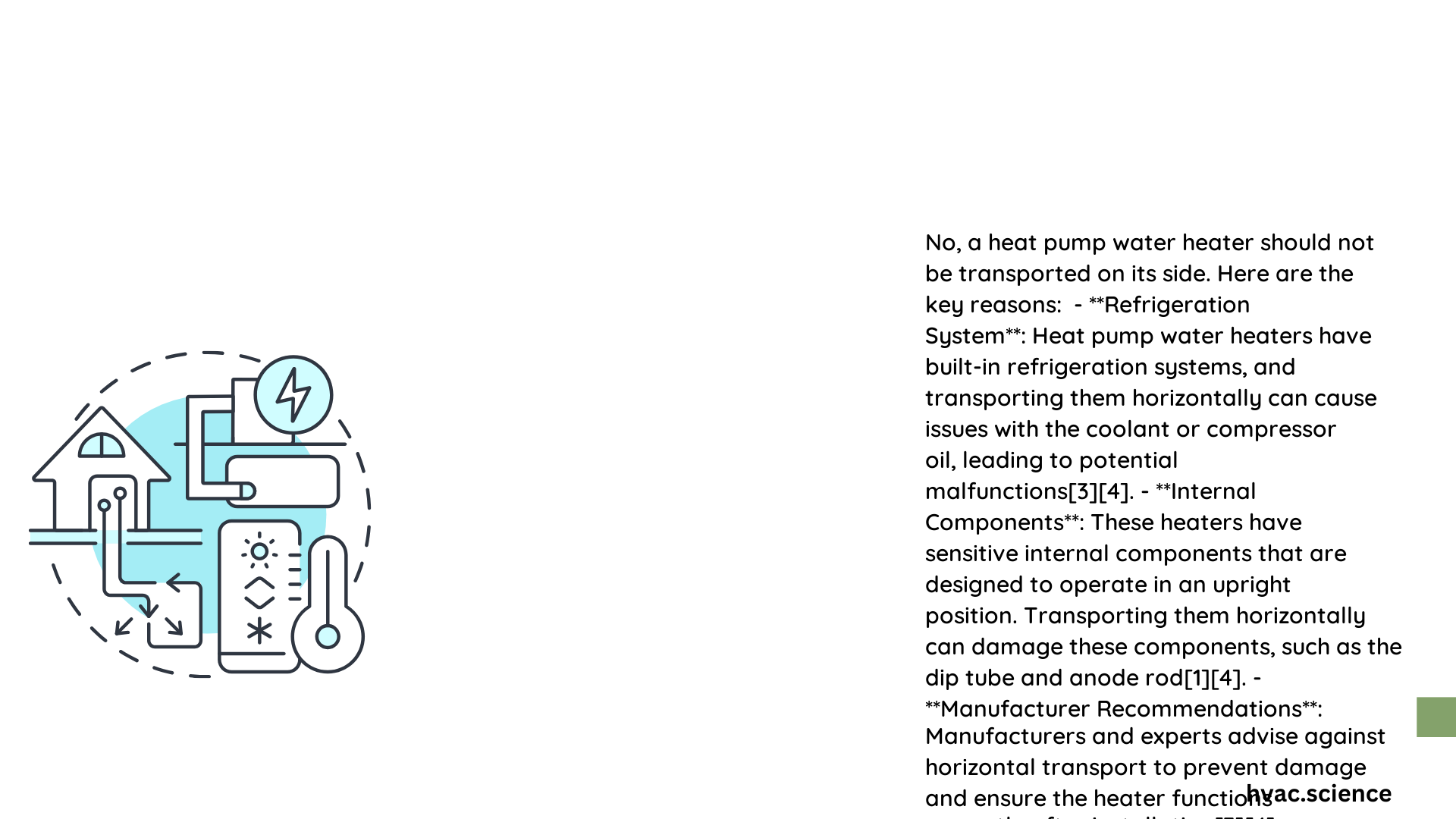Transporting a heat pump water heater requires careful handling and strategic planning. While technically possible to move on its side, professionals recommend maintaining an upright position to prevent potential damage to internal components, refrigerant lines, and structural integrity. Understanding the nuanced guidelines can help homeowners and movers protect their valuable investment during transportation.
What Happens When You Transport a Heat Pump Water Heater Sideways?
Heat pump water heaters are sophisticated appliances with delicate internal mechanisms that can be sensitive to positioning. When considering transportation, several critical factors come into play:
Can Sideways Transportation Cause Immediate Damage?
- Potential Risks:
- Refrigerant displacement
- Compressor oil migration
- Potential seal or gasket stress
-
Component misalignment
-
Manufacturer Recommendations:
- Maintain vertical orientation
- Use professional moving equipment
- Minimize lateral movement
How Long Can a Heat Pump Water Heater Remain on Its Side?
| Duration | Risk Level | Recommended Action |
|---|---|---|
| < 1 Hour | Low Risk | Careful handling, minimal stress |
| 1-4 Hours | Moderate Risk | Monitor for potential issues |
| > 4 Hours | High Risk | Professional inspection recommended |
Best Practices for Safe Transportation

What Equipment Should You Use?
Professional movers recommend:
– Heavy-duty appliance dolly
– Adjustable straps
– Protective moving blankets
– Minimum two-person lifting team
What Precautions Protect Your Water Heater?
Critical transportation guidelines include:
– Never drag the unit
– Avoid sudden movements
– Maintain balanced lifting
– Protect external components from impacts
Technical Considerations for Heat Pump Water Heater Movement
Heat pump water heaters differ from traditional models due to their complex refrigeration cycle. The compressor and refrigerant lines require extra attention during transportation. Sideways movement can potentially:
- Disrupt refrigerant distribution
- Create air pockets in cooling lines
- Compromise thermal efficiency
- Risk internal component misalignment
What Should You Do After Transportation?
- Allow unit to stabilize for 2-3 hours before installation
- Inspect for visible external damage
- Check all connection points
- Verify manufacturer warranty conditions
Professional Recommendations
Experts unanimously suggest:
– Prioritize vertical positioning
– Use professional moving services
– Consult manufacturer guidelines
– Consider insurance for high-value appliances
Cost Implications of Improper Transportation
Potential risks of incorrect transportation include:
– Warranty voiding
– Repair costs ($500 – $1,500)
– Complete unit replacement
– Performance degradation
Final Verdict: Can You Transport a Heat Pump Water Heater on Its Side?
Technically possible, but not recommended. Minimize sideways positioning, prioritize vertical transportation, and handle with extreme care.
Pro Tip
Always contact your specific manufacturer for model-specific transportation guidelines, as recommendations can vary between brands and models.
Reference:
– Energy.gov Water Heater Guidelines
– AHRI Water Heater Standards
– Manufacturer Installation Manuals
